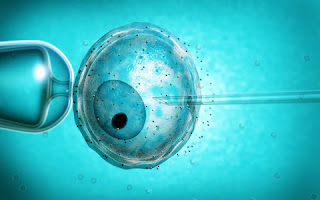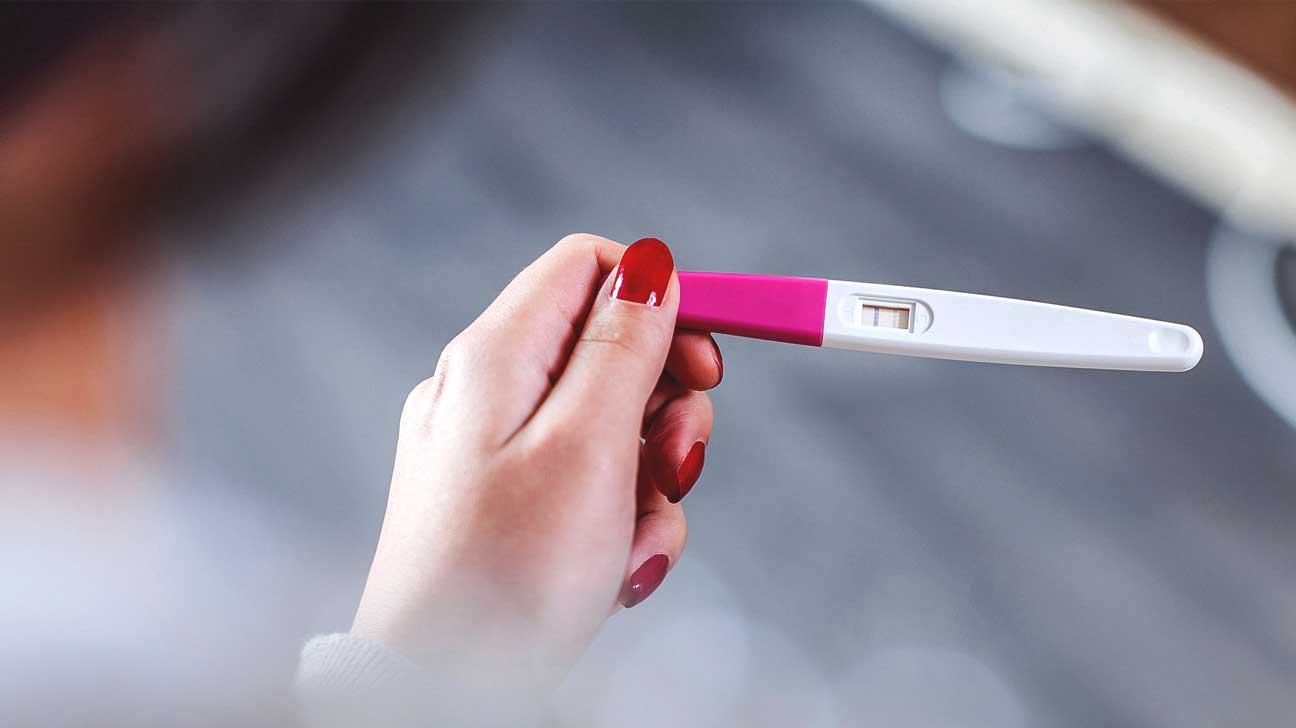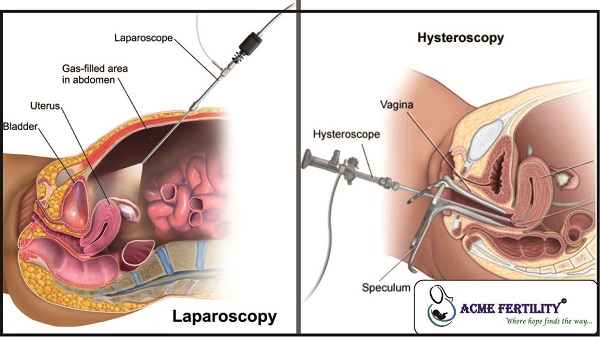In vitro fertilization (IVF) is a complex series of procedures used to help with fertility or prevent genetic problems and assist with the conception of a child.
IVF is the most effective form of assisted reproductive technology. The procedure can be done using your own eggs and your partner’s sperm. Or IVF may involve eggs,
sperm or embryos from a known or anonymous donor. In some cases, a gestational carrier — a woman who has an embryo implanted in her uterus — might be used.
Your chances of having a healthy baby using IVF depend on many factors, such as your age and the cause of infertility. In addition, IVF can be time-consuming,
expensive and invasive. If more than one embryo is transferred to your uterus, IVF can result in a pregnancy with more than one fetus (multiple pregnancy).
Your doctor can help you understand how IVF works, the potential risks and whether this method of treating infertility is right for you.
In vitro fertilization (IVF) is a treatment for infertility or genetic problems. If IVF is performed to treat infertility, you and your partner might be able to try less-invasive treatment options before attempting IVF, including fertility drugs to increase production of eggs or intrauterine insemination a procedure in which sperm are placed directly in your uterus near the time of ovulation. Sometimes, IVF is offered as a primary treatment for infertility in women over age 40.

IVF can also be done if you have certain health conditions. For example, IVF may be an option if you or your partner has: Fallopian tube damage or blockage. Fallopian tube damage or blockage makes it difficult for an egg to be fertilized or for an embryo to travel to the uterus. Ovulation disorders. If ovulation is infrequent or absent, fewer eggs are available for fertilization. Endometriosis. Endometriosis occurs when the uterine tissue implants and grows outside of the uterus — often affecting the function of the ovaries, uterus and Fallopian tubes. Uterine fibroid. Fibroid are benign tumors in the wall of the uterus and are common in women in their 30s and 40s. Fibroid can interfere with implantation of the fertilized egg. Previous tubal sterilization or removal. If you’ve had tubal ligation — a type of sterilization in which your Fallopian tubes are cut or blocked to permanently prevent pregnancy — and want to conceive, IVF may be an alternative to tubal ligation reversal. Impaired sperm production or function. Below-average sperm concentration, weak movement of sperm (poor mobility), or abnormalities in sperm size and shape can make it difficult for sperm to fertilize an egg. If semen abnormalities are found, your partner might need to see a specialist to determine if there are correctable problems or underlying health concerns.
Unexplained infertility.
Risks of IVF include:
Multiple births. IVF increases the risk of multiple births if more than one embryo is transferred to your uterus. A pregnancy with multiple fetuses carries a higher risk of early
labor and low birth weight than pregnancy with a single fetus does. Premature delivery and low birth weight. Research suggests that IVF slightly increases the risk that the baby will
be born early or with a low birth weight. Ovarian hyper stimulation syndrome. Use of inject able fertility drugs, such as human chronic gonadotropin (HCG), to induce ovulation can cause
ovarian hyper stimulation syndrome, in which your ovaries become swollen and painful. Symptoms typically last a week and include mild abdominal pain, bloating, nausea, vomiting and diarrhea.
If you become pregnant, however, your symptoms might last several weeks. Rarely, it’s possible to develop a more severe form of ovarian hyper stimulation syndrome that can also cause rapid
weight gain and shortness of breath. Miscarriage. The rate of miscarriage for women who conceive using IVF with fresh embryos is similar to that of women who conceive naturally — about 15%
to 25% — but the rate increases with maternal age. Egg-retrieval procedure complications. Use of an aspirating needle to collect eggs could possibly cause bleeding, infection or damage to
the bowel, bladder or a blood vessel. Risks are also associated with sedation and general anesthesia, if used. Ectopic pregnancy. About 2% to 5% of women who use IVF will have an ectopic
pregnancy — when the fertilized egg implants outside the uterus, usually in a Fallopian tube. The fertilized egg can’t survive outside the uterus, and there’s no way to continue the
pregnancy.Birth defects. The age of the mother is the primary risk factor in the development of birth defects, no matter how the child is conceived. More research is needed to determine
whether babies conceived using IVF might be at increased risk of certain birth defects. Cancer. Although some early studies suggested there may be a link between certain medications used
to stimulate egg growth and the development of a specific type of ovarian tumor, more-recent studies do not support these findings. There does not appear to be a significantly increased risk
of breast, endometrial, cervical or ovarian cancer after IVF. Stress. Use of IVF can be financially, physically and emotionally draining. Support from counselors, family and friends can help
you and your partner through the ups and downs of infertility treatment.How you prepare The Centers for Disease Control and Prevention and the Society for Assisted Reproductive Technology
provide information online about U.S. clinics’ individual pregnancy and live birth rates. When choosing an in vitro fertilization (IVF) clinic, keep in mind that a clinic’s success rate
depends on many factors, such as patients’ ages and medical issues, as well as the clinic’s treatment population and treatment approaches.

Before beginning a cycle of IVF using your own eggs and sperm, you and your partner will likely need various screenings, including:
Ovarian reserve testing. To determine the quantity and quality of your eggs, your doctor might test the concentration of follicle-stimulating hormone (FSH), estradiol (estrogen) and
anti-mullerian hormone in your blood during the first few days of your menstrual cycle. Test results, often used together with an ultrasound of your ovaries, can help predict how your
ovaries will respond to fertility medication. Semen analysis. If not done as part of your initial fertility evaluation, your doctor will conduct a semen analysis shortly before the
start of an IVF treatment cycle.Infectious disease screening. You and your partner will both be screened for infectious diseases, including HIV. Practice (mock) embryo transfer. Your
doctor might conduct a mock embryo transfer to determine the depth of your uterine cavity and the technique most likely to successfully place the embryos into your uterus. Uterine exam.
Your doctor will examine the inside lining of the uterus before you start IVF. This might involve a sonohysterography — in which fluid is injected through the cervix into your uterus —
and an ultrasound to create images of your uterine cavity. Or it might include a hysteroscopy — in which a thin, flexible, lighted telescope (hysteroscope) is inserted through your vagina
and cervix into your uterus.
Before beginning a cycle of IVF, consider important questions, including:
How many embryos will be transferred?
The number of embryos transferred is typically based on age and number of eggs retrieved. Since the rate of implantation is lower for older women, more embryos are usually transferred — except for women using donor eggs or genetically tested embryos. Most doctors follow specific guidelines to prevent a higher order multiple pregnancy triplets or more and in some countries, legislation limits the number of embryos that can be transferred. Make sure you and your doctor agree on the number of embryos that will be transferred before the transfer procedure.
What will you do with any extra embryos?
Extra embryos can be frozen and stored for future use for several years. Not all embryos will survive the freezing and thawing process, although most will. Cryopreservation can make future cycles of IVF less expensive and less invasive. Or, you might be able to donate unused frozen embryos to another couple or a research facility. You might also choose to discard unused embryos.
How will you handle a multiple pregnancy?
If more than one embryo is transferred to your uterus, IVF can result in a multiple pregnancy — which poses health risks for you and your babies. In some cases, fetal reduction can be used
to help a woman deliver fewer babies with lower health risks. Pursuing fetal reduction, however, is a major decision with ethical, emotional and psychological consequences. Have you
considered the potential complications associated with using donor eggs, sperm or embryos, or a gestational carrier? A trained counselor with expertise in donor issues can help you
understand the concerns, such as the legal rights of the donor.
Ovulation induction : If you’re using your own eggs during IVF, at the start of a cycle you’ll begin treatment with synthetic hormones to stimulate your ovaries to produce multiple eggs rather than the single egg that normally develops each month. Multiple eggs are needed because some eggs won’t fertilize or develop normally after fertilization.
You may need several different medications, such as:
Medications for ovarian stimulation. To stimulate your ovaries, you might receive an injectable medication containing a follicle-stimulating hormone (FSH), a luteinizing hormone (LH) or a
combination of both. These medications stimulate more than one egg to develop at a time. Medications for oocyte maturation. When the follicles are ready for egg retrieval — generally after
eight to 14 days — you will take human chorionic gonadotropin (HCG) or other medications to help the eggs mature. Medications to prevent premature ovulation. These medications prevent your
body from releasing the developing eggs too soon. Medications to prepare the lining of your uterus. On the day of egg retrieval or at the time of embryo transfer, your doctor might
recommend that you begin taking progesterone supplements to make the lining of your uterus more receptive to implantation.
Fertilization can be attempted using two common methods:
Conventional insemination. During conventional insemination, healthy sperm and mature eggs are mixed and incubated overnight. Intracytoplasmic sperm injection (ICSI). In ICSI, a single
healthy sperm is injected directly into each mature egg. ICSI is often used when semen quality or number is a problem or if fertilization attempts during prior IVF cycles failed. In
certain situations, your doctor may recommend other procedures before embryo transfer.
Assisted hatching. About five to six days after fertilization, an embryo “hatches” from its surrounding membrane (zona pellucida), allowing it to implant into the lining of the uterus.
If you’re an older woman, or if you have had multiple failed IVF attempts, your doctor might recommend assisted hatching — a technique in which a hole is made in the zona pellucida just
before transfer to help the embryo hatch and implant. Assisted hatching is also useful for eggs or embryos that have been previously frozen as the process can harden the zona pellucida.
Preimplantation genetic testing. Embryos are allowed to develop in the incubator until they reach a stage where a small sample can be removed and tested for specific genetic diseases or
the correct number of chromosomes, typically after five to six days of development. Embryos that don’t contain affected genes or chromosomes can be transferred to your uterus. While
preimplantation genetic testing can reduce the likelihood that a parent will pass on a genetic problem, it can’t eliminate the risk. Prenatal testing may still be recommended.
Embryo transfer
Embryo transfer is done at your doctor’s office or a clinic and usually takes place two to five days after egg retrieval.
You might be given a mild sedative. The procedure is usually painless, although you might experience mild cramping. The doctor will insert a long, thin, flexible tube called a catheter into
your vagina, through your cervix and into your uterus. A syringe containing one or more embryos suspended in a small amount of fluid is attached to the end of the catheter.Using the syringe,
the doctor places the embryo or embryos into your uterus. If successful, an embryo will implant in the lining of your uterus about six to 10 days after egg retrieval.
After the procedure
After the embryo transfer, you can resume normal daily activities. However, your ovaries may still be enlarged. Consider avoiding vigorous activity, which could cause discomfort.
Typical side effects include:
Passing a small amount of clear or bloody fluid shortly after the procedure — due to the swabbing of the cervix before the embryo transfer Breast tenderness due to high estrogen levels
Mild bloating
Mild cramping
Constipation
If you develop moderate or severe pain after the embryo transfer, contact your doctor. He or she will evaluate you for complications such as infection, twisting of an ovary (ovarian torsion)
and severe ovarian hyperstimulation syndrome.
Results
About 12 days to two weeks after egg retrieval, your doctor will test a sample of your blood to detect whether you’re pregnant.
If you’re pregnant, your doctor will refer you to an obstetrician or other pregnancy specialist for prenatal care. If you’re not pregnant, you’ll stop taking progesterone and likely get
your period within a week. If you don’t get your period or you have unusual bleeding, contact your doctor. If you’re interested in attempting another cycle of in vitro fertilization (IVF),
your doctor might suggest steps you can take to improve your chances of getting pregnant through IVF. The chances of giving birth to a healthy baby after using IVF depend on various factors,
including:
Maternal age. The younger you are, the more likely you are to get pregnant and give birth to a healthy baby using your own eggs during IVF. Women age 41 and older are often counseled to
consider using donor eggs during IVF to increase the chances of success. Embryo status. Transfer of embryos that are more developed is associated with higher pregnancy rates compared with
less-developed embryos (day two or three). However, not all embryos survive the development process. Talk with your doctor or other care provider about your specific situation.Reproductive
history. Women who’ve previously given birth are more likely to be able to get pregnant using IVF than are women who’ve never given birth.




Wow, amazing weblog structure! How lengthy have you ever been running a blog for? you made running a blog look easy. The whole look of your website is wonderful, as neatly as the content!!
Lzcqot Biotin https://newfasttadalafil.com/ – Cialis Nzcqjx Cialis Cialis Dove Comprare Online Bahyyd https://newfasttadalafil.com/ – where to buy cialis Ulvesl
generic cialis online pharmacy Senn L, Eggimann P, Ksontini R, Pascual A, Demartines N, Bille J, Calandra T, Marchetti O Caspofungin for prevention of intra abdominal candidiasis in high risk surgical patients